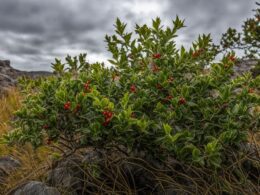If you’ve noticed white spots on your pumpkin leaves, it’s likely that your plants are affected by powdery mildew, a common fungal disease. These white spots can quickly spread, leading to leaf drop and a bitter taste in the fruit if left untreated.
There are several causes for the development of powdery mildew on pumpkin leaves. The fungus thrives in hot and wet conditions, but heavy rain or poor overhead watering practices can also contribute to its growth. It’s not limited to pumpkins either, as squash, cucumbers, tomatoes, and beans are also commonly affected.
To effectively manage powdery mildew and prevent further damage, there are specific tips that you can follow. It’s important to implement good watering practices, such as watering at the base of the plant rather than overhead. This helps to minimize moisture on the leaves, which can encourage fungal growth. Additionally, pruning overcrowded plants to promote better air circulation can reduce the risk of powdery mildew development.
Using resistant plant varieties is another preventive measure you can take. Some pumpkin varieties are more resistant to powdery mildew than others, so choosing the right type of pumpkin can make a difference. Additionally, applying a fungicide like Neem Oil on a regular basis can help prevent and treat powdery mildew on pumpkin leaves.
By following these effective management tips, you can protect your pumpkin plants from powdery mildew and ensure a healthy harvest. Remember to monitor your plants regularly and take immediate action if you spot any signs of powdery mildew, such as the tell-tale white spots on pumpkin leaves.
Cultural Control Tactics for Managing Powdery Mildew on Pumpkin Leaves
When it comes to managing powdery mildew on pumpkin leaves, integrating cultural control tactics into your gardening practices is essential. By following these tactics, you can effectively prevent and minimize the impact of powdery mildew on your precious pumpkins.
1. Plant in Well-Drained Areas
Choose well-drained areas for planting your pumpkins, as this reduces the risk of powdery mildew. Poor drainage creates a favorable environment for fungal growth, so ensure adequate water drainage in your garden.
2. Plant Early in the Season
By planting your pumpkins early in the season, you can take advantage of cooler temperatures that are less conducive to powdery mildew development. Starting early gives your pumpkin plants a head start to establish proper growth and resilience against the fungal disease.
3. Remove Dying Plants
Regularly inspect your pumpkin patch for any signs of dying or infected plants. Promptly remove and dispose of these plants to prevent the spread of powdery mildew to healthy plants. Proper sanitation is crucial in stopping the disease from spreading further.
4. Avoid Overhead Irrigation
Overhead irrigation, such as sprinklers, can create a wet environment on the leaves, promoting powdery mildew growth. Instead, water your pumpkin plants at the base to deliver moisture directly to the roots. This method helps keep the foliage dry and minimizes the risk of infection.
5. Practice Crop Rotation
Rotating crops in your garden is an effective way to disrupt the lifecycle of powdery mildew and reduce its prevalence. Avoid planting pumpkins or other susceptible plants in the same location year after year. Instead, rotate them with non-related plants to break the disease cycle.
By integrating these cultural control tactics into your pumpkin-growing routine and implementing a basic fungicide spray program, you can effectively manage powdery mildew on pumpkin leaves. Stay diligent and proactive in your efforts to keep your pumpkin plants healthy and thriving.
Fungicide Spray Program and Scouting for Major Diseases on Pumpkin Leaves
A fungicide spray program is essential for preventing and managing major diseases on pumpkin leaves. To effectively protect your pumpkin plants, it is recommended to apply a fungicide containing chlorothalonil or mancozeb every 10 to 14 days. However, during periods of heavy rainfall, it is advisable to tighten the interval to 10 days for better disease control.
When implementing a fungicide spray program, it is important to scout for major diseases that can affect pumpkin leaves. There are three diseases that pumpkin growers should be especially vigilant for: downy mildew, powdery mildew, and plectosporium blight (white blight).
- Downy mildew: This disease is caused by the fungus Pseudoperonospora cubensis. To manage downy mildew, use fungicides like Elumin, Orondis Ultra, Orondis Opti, and Ranman. Regular scouting and early detection are essential for effective control.
- Powdery mildew: Caused by Podosphaera xanthii and Erysiphe cichoracearum fungi, powdery mildew can be controlled with fungicides like Gatten, Luna Experience, Quintec, and Vivando. Timely application of these fungicides is important to prevent the disease from spreading.
- Plectosporium blight: This disease is characterized by white diamond-shaped lesions on the leaves. Managing plectosporium blight involves implementing a basic fungicide spray program and cultural control tactics. Regular scouting helps detect the disease early, allowing for prompt treatment.
Conclusion
Powdery mildew management is crucial for maintaining healthy pumpkin leaves. By implementing a combination of cultural control tactics and a fungicide spray program, you can effectively minimize the impact of this common fungal disease. Planting your pumpkins in well-drained areas, removing dying plants promptly, and practicing crop rotation are important preventive measures that can reduce the risk of powdery mildew. Additionally, regularly scouting for major diseases like downy mildew and plectosporium blight will enable early detection and timely treatment.
Remember to follow a basic fungicide spray program, applying chlorothalonil or mancozeb every 10 to 14 days, with a shorter interval during periods of heavy rainfall. This will help control powdery mildew and maintain the health of your pumpkin leaves. By taking these proactive measures and staying vigilant, you can ensure your pumpkin patches thrive and produce healthy, blemish-free fruits.
In conclusion, powdery mildew management is a vital aspect of pumpkin cultivation. Incorporating cultural control tactics, implementing a fungicide spray program, and consistently scouting for diseases are essential for optimal pumpkin leaf health. By following these measures, you can effectively manage powdery mildew and enjoy a fruitful pumpkin harvest.
Can White Spots on Pumpkin Leaves Affect the Harvest of Delicata Squash?
Yes, white spots on pumpkin leaves can affect the harvest of delicata squash. These spots might be a sign of powdery mildew, which can weaken the plants and reduce fruit yield. To prevent this, follow proper harvesting delicata squash tips to ensure a healthy and plentiful harvest.
Source Links
- https://backyardgardenclub.org/blog/powdery-mildew-and-how-to-save-your-plants-when-you-get-it
- https://www.uaex.uada.edu/farm-ranch/crops-commercial-horticulture/horticulture/ar-fruit-veg-nut-update-blog/posts/diseasemgmt_pumpkins.aspx
- https://www.gardeningknowhow.com/edible/vegetables/pumpkin/powdery-mildew-on-pumpkins.htm










